Seeing as I put the effort into selecting 20 photos to present at Pecha Kucha in Muenster I might as well share them with anyone reading my blog – I’m looking at you Nan! It wasn’t easy to select only 20 photos from the past 61 weeks of travel. A quick count says I’ve taken just over 11,000 since the start of 2010 alone, and I don’t want to admit how many I’ve taken in total over this trip. Let’s just assume it was many more than 20. So below are what I think are some of the best photos I’ve taken this trip, though some of them were chosen more for the story than the artistic side of things.
Japan in cherry blossom season is beautiful and we hit it perfectly on the start of our extended honeymoon. The Japanese love having hanami parties which translates to “flower viewing”. They involve a group of friends, a lot of sake and a blue tarpaulin spread out underneath the blossom covered trees. It’s by far the best season to be in Japan and it was the first time I’d really been able to enjoy it, because previously in my Japan-based tourism jobs spring was obviously our most busy season. The castle in the second photo is Himeji, the most beautiful castle in Japan and the perfect place to be when the flowers are in full bloom.
A Buddhist temple in South Korea. The painted decoration on the roofs was pretty incredible, as you can see. Pretty much every building in every temple we went to looked like this, it must take an army of painters to keep everything looking so fresh and brightly painted. We were there around Buddha’s birthday and in celebration all the temples put up hundreds of colourful paper lanterns which were lit up at night.
At the border of North and South Korea, in the zone administered by the United Nations. The blue building straddles the border and is where any negotiations between the two sides take place. Technically they’re still at war, after the Korean War of the 1950s a ceasefire was signed but never a true peace treaty. In the last few days with an international report finding that a South Korean warship was sunk by a North Korean torpedo the north has retaliated by withdrawing from the ceasefire agreement. Anyway, on the day we were there everything was peaceful, if a little bizarre. The soldier on the right is standing facing North Korea but keeping half of his body safe behind the building. Just in case.
Traditional Korean folk music called pungmul. The drummers are constantly moving and dancing around as they play, and some of them wear ribbons attached to their hat which spin around as they bobble their heads. It’s a bit hard to describe but if you can imagine a group of guys dancing in a circle, playing drums and moving their heads around in circles then you can start to imagine the amount of coordination that would be needed. Impressive.
The western end of the Great Wall of China, in Xinjiang province. A big fort from which the camel caravans headed further west along the silk road and around the Taklamakan Desert. I was really happy to take Brett to Xinjiang which is probably my favourite area in China. The people are beautiful, the countryside impressive and the history interesting.
Kashgar animal market, Xinjiang. Every Sunday men get together here to buy/sell goats, sheep, donkeys, horses and cows. It’s a dusty, chaotic mess and its great fun to watch the buying process. The only reason to leave is to make sure you don’t miss the rest of the Sunday market, one of the biggest in the area, where absolutely everything can be bought.
Tearing down Kashgar’s old town. The historic centre of the city is being destroyed to make way for shopping malls and other things that the Han Chinese prefer. Beautiful courtyard houses and the narrow twisting alleyways between them are disappearing, with big painted 拆symbols on the walls showing how many more are scheduled to be demolished. I tried to spend as much time as possible in the old town because I know that by the time I go back it may not exist anymore.
A yurt/ger in Kyrgyzstan. We spent a few nights in these nomadic homes, which are easily dismantled and moved twice a year, when the animals need to be moved into or away from higher pastures. They’re traditionally made of felt and are quite comfortable inside, even when it’s snowing outside they’re toasty and warm thanks to the stove in the centre. Inside you sleep on mattresses on the carpet covered floor.
The animal market in Karakol, Kyrgyzstan. Animals were brought to market in any available transport, including the luggage trunk of the Russian made Lada cars. At one stage we saw a cow, a sheep and three people pile into the back of a minivan. Then a man rode up on a horse… (it didn’t end up going in). We weren’t actually planning on spending the day in Karakol but Brett was feeling a bit ill (i’d been ill the day before) so we spent the day wandering around and relaxing. The animal market was as interesting for people watching as it was for the animals, there was the most amazing mix of faces – European, Asian, Middle-Eastern, Mongolian and every possible combination thereof.
The bus trip from hell, Tajikistan. We were travelling from Khorog to Dushanbe which is only about 600km but it took us 55 hours. I’m not kidding. The van got 8 flat tyres, we had engine problems, the driver wasn’t carrying spare inner tubes or a pump, we had engine problems and it was a religious holiday so there wasn’t as many cars on the road to stop and help. We’d left in the morning planning to be in Dushanbe that evening but were only half way by midnight. By the time we were broken down the 2nd night the rest of the passengers bailed out and got in a truck. Brett and I spent the night of our six month wedding anniversary in a broken down van then finally got the tyre pumped up. About 15 minutes after we started driving another tyre was flat but the driver kept driving. Part of the car fell off because the shredded tyre was flapping against it and by the time we limped into the next town a second tyre was also flat. At that point, still a few hundred km from Dushanbe, we jumped into another car and rode in the boot for another 5 hours. This picture was taken on the first day, broken down with Afghanistan on the other side of the river. In an area some people recomend not driving through, not to mention being broken down for four hours…
Riga, Latvia. After adventures like that one above it was great to be in a more developed country where cars are reliable, toilets flush and greasy mutton wasn’t added to every meal. Having said that I loved what we saw of Central Asia and we’re planning to do some more exploring. While Brett was at work I spent a few weeks hanging out in Riga, exploring the old town and admiring the beautiful Art Nouveau architecture.
Rila Monastery, Bulgaria. Up in the mountains outside Sofia this monastery has been a safe haven for Bulgarian culture and religion throughout history. It was protected during the Ottoman era and managed to survive the Communists too. Originally founded in the 10th century the oldest buildings still in existence are from the 14th century and it’s obviously designed to withhold a siege. The central church is surrounded by thick defensive walls in which the monk’s cells are located. External windows are built very small. This picture is of the outside of the church, which is completely covered in stunning frescoes. This one is in a dome in the roof and I remember spending a lot of time leaning as far back as I could, trying to take it all in.
Sighisoara, Romania. A beautiful fortified medieval town perched on top of a hill, now of course surrounded by the modern new town on the plains below. It was originally founded by Germanic people in the 12th century who were invited by the King of Hungary to protect the borders of his land. It amazed me in our travels in this area of Europe how many times Germanic people were mentioned, we even went to a fortified church in a community that still spoke an old form of German and used German bibles. Anyway, Sighisoara was probably more famous amongst tourists as the birthplace of Vlad Tepes, also known as Vlad the Impaler or Count Dracula. Bram Stoker has a lot to answer for, the house that little Vlad lived in for the first four years of his life is now an expensive restaurant popular with tour bus groups.
Kiev, Ukraine. Please appreciate this photo, it was about -15oC when I took it and very windy. I’ve never been so cold in my life, and when my fingers finally defrosted after all the photo taking they actually ached. Though it was such a beautiful sky I had to take pictures. I have to say I never need to live through another Ukrainian winter, though apparently all of Europe had a particularly harsh season. Just our luck. I didn’t pack for those temperatures.
Istanbul, Turkey. A fascinating city, so full of history and culture that we spent two weeks and only forced ourselves to leave by realising that if the city was this amazing then the rest of the country was worth seeing too. It was established as the eastern capital of the Roman empire in 330AD and when the western Roman empire collapsed it was the capital of the Byzantine empire until the Ottoman Turks took over in 1453. Then it was capital of that great empire until after WW1. The most amazing thing is that all that history is still there, something that only really hit me when we went to Gallipoli. If the Gallipoli campaign (something central to Australia’s sense of identity) in WW1 had been successful, the next stage of that plan was to head up the Dardanelles and bomb the bejeezus out of Istanbul. Turkey stayed neutral in WW2.
Olympos, Turkey. This isn’t a bonfire, it’s natural gas seeping out of the ground, that ignites on contact with the air. Even if the flames (there are about 15 of them) are put out with water, they reignite on their own. It was a pretty impressive sight and one that inspired worship of the gods thousands of years ago. Near where we stayed a small city has been uncovered and near the flames you could see the remains of an ancient temple.
Cappadocia, Turkey. No matter how hard I tried, I never did manage to capture how cool this area is in a photo. As nice as the 2D image is it can’t express the feeling of clambering into one of the openings in a fairy chimney, and following eroded passageways through to other rooms carved into the volcanic rock. For thousands of years people have been carving into the rock, to escape religious persecution, avoid the heat or just to save money on building materials. The caves were used for houses, storerooms, wine presses, pigeon coops to collect the droppings for fertiliser and as churches. There’s even a cave mosque. After all the amazing photos we’d seen and all the eager anticipation it was pretty impressive that Cappadocia not only lived up to expectations but exceeded them.
Mt Nemrut, Turkey. Back in the 1st century BC a local ruler indulged in some delusions of grandeur and built himself a monumental tomb on top of this 2,100m high mountain. He erected 9m tall statues of himself, his family and the gods (who were obviously also his relatives), and set them up on the east and west sides of an artificial terrace. Between them he built a massive 50m high mound of rock which is believed to cover his tomb. The power of his small empire didn’t last long after his death and he would hardly be a footnote in history if it wasn’t for these incredible statues, now picturesquely collapsed. We delayed our visit as long as possible to wait for the snow to melt and were really glad we made it up.
Tags: Pecha Kucha
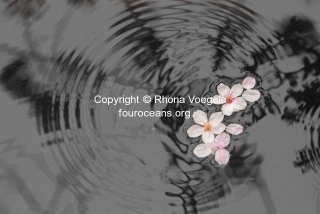
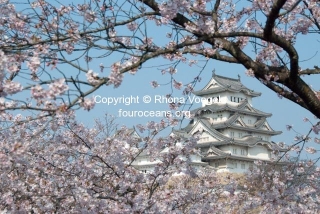
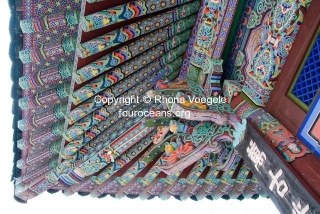
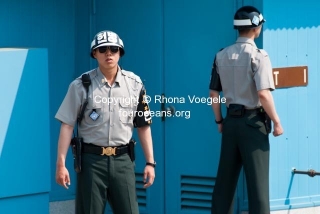
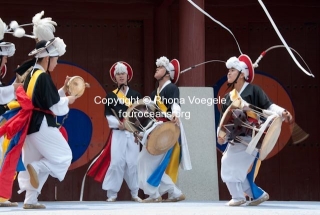
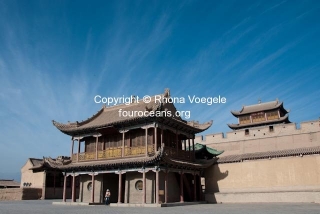
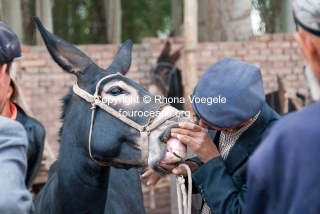
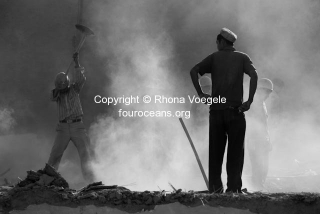
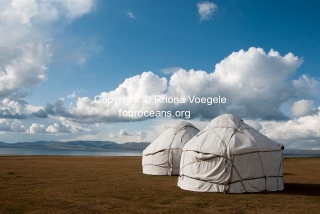
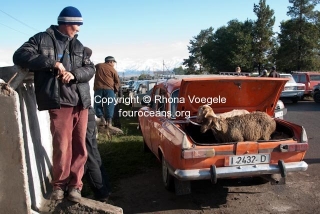
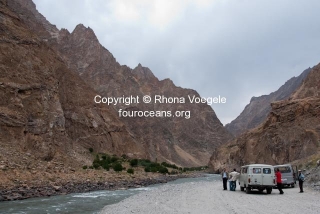
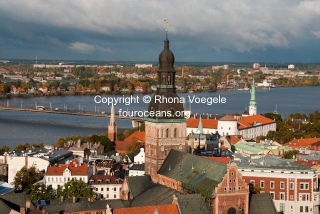
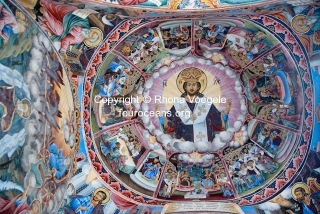
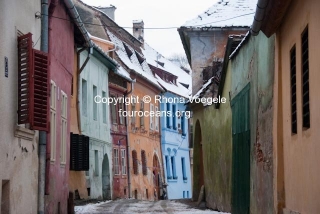
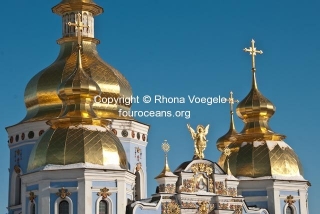
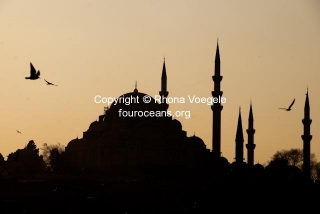
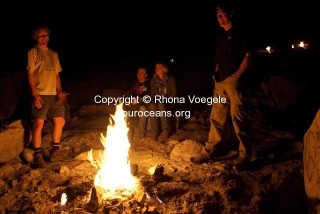
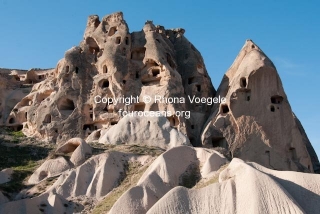
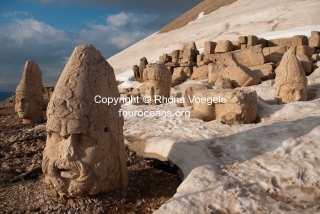
3 comments so far
Leave a reply